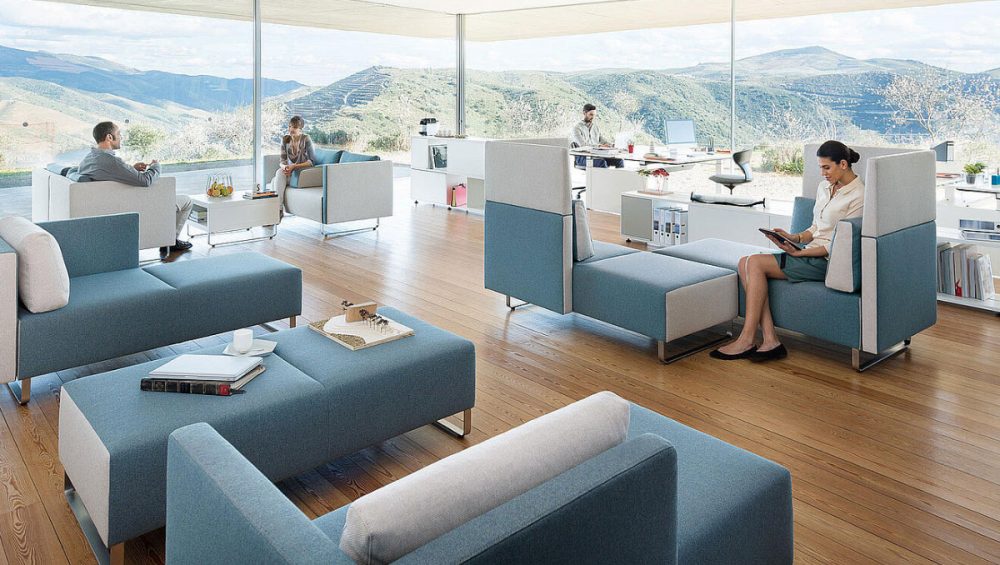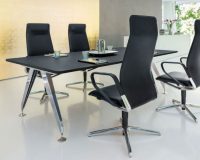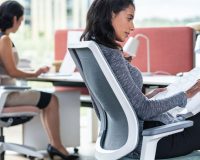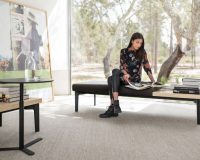Appreciation of employees shown by an attractive work environment
How can furnishing solutions for the future world of work be developed that promote well-being, satisfaction and cooperation among staff? Especially in the context of illness prevention in the company, work environments need to take account of essential processes, demonstrate employee appreciation on the part of the company and fulfil important ergonomic requirements all at the same time.
For Sedus Stoll AG, the European office furniture manufacturer, the current state of affairs in the world of work is of fundamental importance when it comes to the creation of new, innovative products. Due to the digital revolution, the world today is changing faster and more profoundly than ever before. This is primarily affecting the way we communicate with each other and how we maintain contact and collaborate with other people. Today, it is easier to share knowledge. There is a trend away from a purely materialistic, owernship mentality towards more open ways of thinking and acting. This is leading to new forms of cooperative behaviour and life-styles are thus becoming more flexible and mutable. On top of all this, there is a growing awareness of one’s own health and the associated responsibility for oneself and what one does. New groupings and forms of organisation are engendering a sense of community and reinforcing cohesiveness by creating their own rituals and identifying themselves with their cultural and symbolic values. What is the common denominator of most innovative work environments?
The office of the future takes account of the needs and expectations of different generations working together. This not only includes important ergonomic aspects but also the freedom to decide where, how and for how long an activity will be performed as well as the guarantee of more behavioural leeway, as a result of which employee satisfaction verifiably increases. Four fundamental needs should be covered by work environments: concentration, communication, cooperation and contemplation.
⦁ Concentrated working
⦁ Informal individual working
⦁ Teamwork – workshops and creativity
⦁ Break out
⦁ Acoustic partitioning – telephone calls areas
⦁ Contemplation – Relax
⦁ Training and Presentation
⦁ Meeting and conference
Summary: The office is not heading for extinction! On the contrary, companies are using attractive work environments and conditions to emotionally tie employees to the company and express the company’s appreciation of them and their work. Competent employees continue to choose the companies they want to work for according to the benefits that the job offers, apart from financial remuneration. Some advantages of employees are of an immaterial nature. The organisation of private life, for example, is often a complicated matter. If an employer makes concessions to his employees by allowing a high degree of flexibility, he promotes satisfaction, reduces illness-related absenteeism and cases of burn-out, and is extremely cost-efficient over the long term.
For companies and their very flexible and globally mobile employees, office buildings and floors will play an increasingly important role as identity-shaping spaces. Indeed, corporate culture itself will be directly located here – especially in holistically designed office landscapes and areas that are mainly dedicated to project work and temporary communicative interaction. This is how “productive well-being”, which enhances the efficiency of a company, is brought about.
The office of today is one of the places in the life of a person that are being most affected by change. Especially for this reason, it is essential that it is in line with the needs of its users, in particular when changes are to be implemented in the context of a process of transformation involving the entire company. Each company applies different business models, does different kinds of work and has different processes, which are ideally reflected in the way the office is laid out. As one of the leading full-range suppliers in the office furniture industry, Sedus offers a wide variety of solutions that are worked out jointly with the customer for every application.
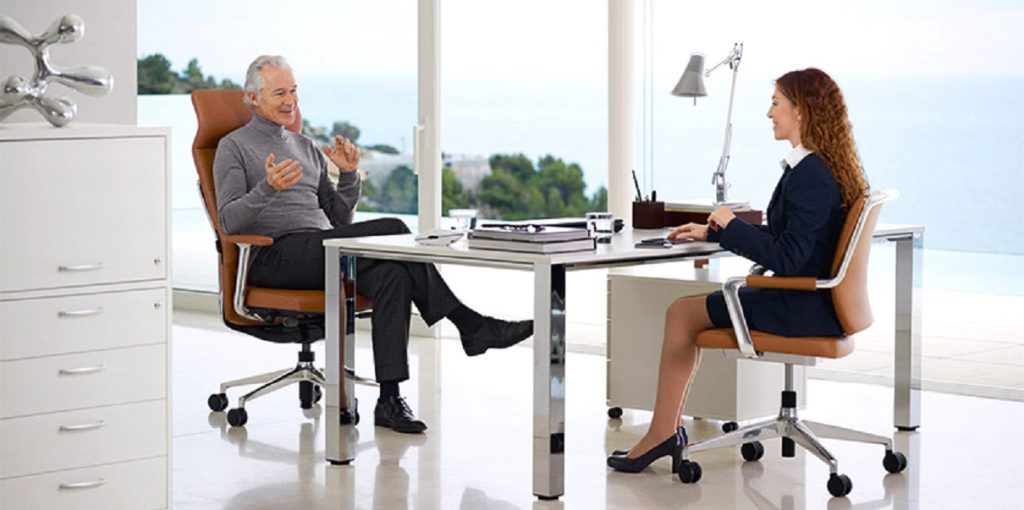
Concentrated working
Individual workstations or single-person offices do not have to be ruled out in the overall concept as they can be exactly what is needed, depending on the work to be done in them. For those people who work in open-space and team offices, opportunities to withdraw from very busy work areas to places where they can concentrate on their work more effectively should be offered. After all, employees spend half of their working hours on average doing concentrated work in isolation. For this, they need distance and acoustic protection.

Informal individual work and reading
For times when employees leave their desk and work somewhere else informally. Whether the individual is alone or interacts with others remains open. The easy and relaxed atmosphere surrounding the “informal solo player” can be an invitation to communicate – but does not necessarily have to be.
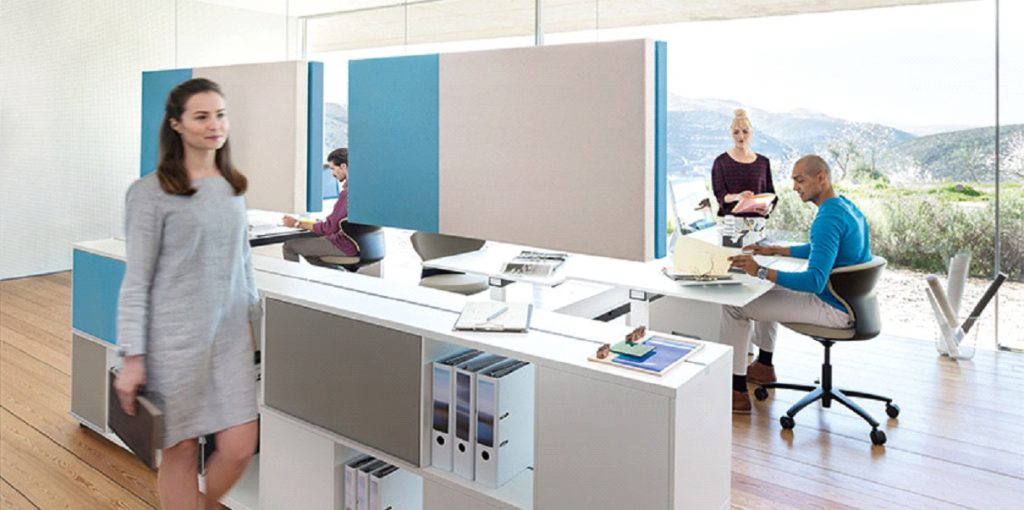
Acoustic partitioning for discreet telephone calls
The disadvantage of offices without walls is that they result in less privacy. For discreet and sometimes urgent private telephone calls, there should also be acoustically screened zones. This should be a matter of course in these days when the boundary between work and private life is becoming increasingly blurred.

Relaxation in a casual posture
Lounge and relaxation areas allow staff to get away from their desks for a while. Colleagues can also meet here in an interdisciplinary framework, as it were, irrespective of the team that they belong to. These rooms and spaces are very much sought-after and encourage communication. They are also suitable, of course, for brief meetings or casual encounters with customers.
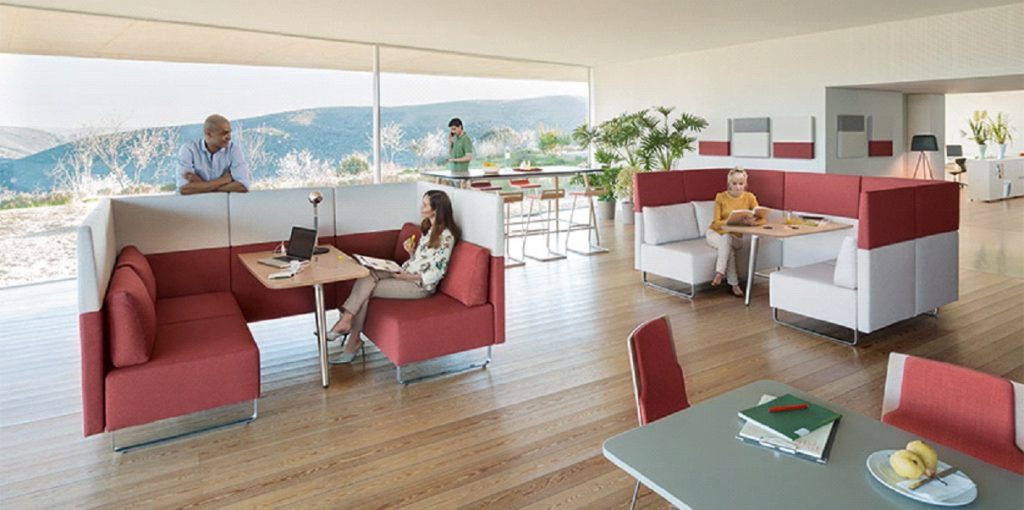
Maintenance of contacts in coffee-breaks, organised meeting points and interfaces
Employees always look for ways to meet each other and exchange ideas and information in an unforced and unplanned manner, thus strengthening their group belongingness. Canteens, lobbies and recreational rooms are the meeting points where all this happens. A naturally designed environment enhances everyone’s well-being. Zones of the infrastructure within the office have a similar function. People often meet each other accidentally at these crossroads and then get talking to each other about issues relevant to their work.
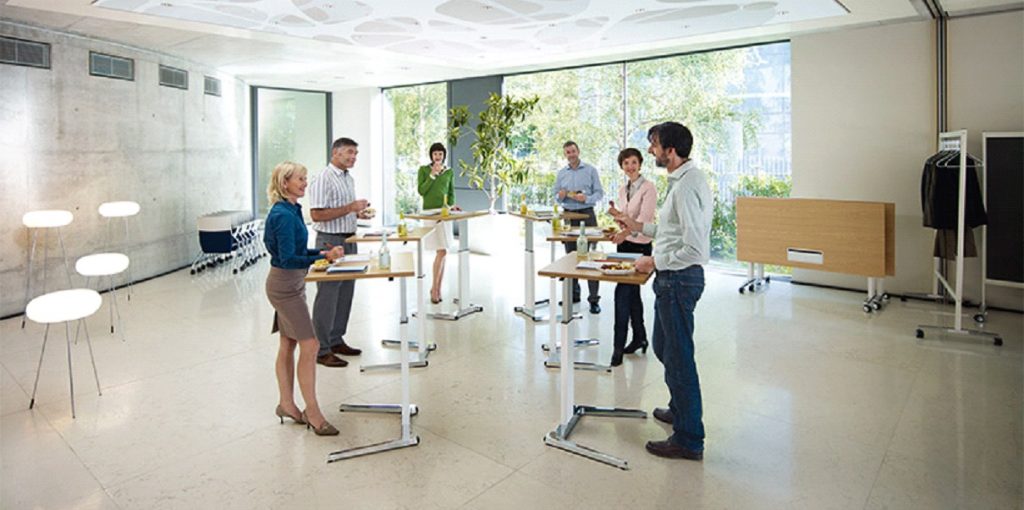
Training rooms and presentation facilities
In our knowledge society, a regular, organised and formal exchange of knowledge is necessary. Although training rooms frequently require special and often technically complicated instruments and equipment, the study shows that the traditional method of teaching from the front is used even in innovative offices. Greater flexibility results from mobile furniture that can be altered and enables configuration and individual settings according to specific needs.
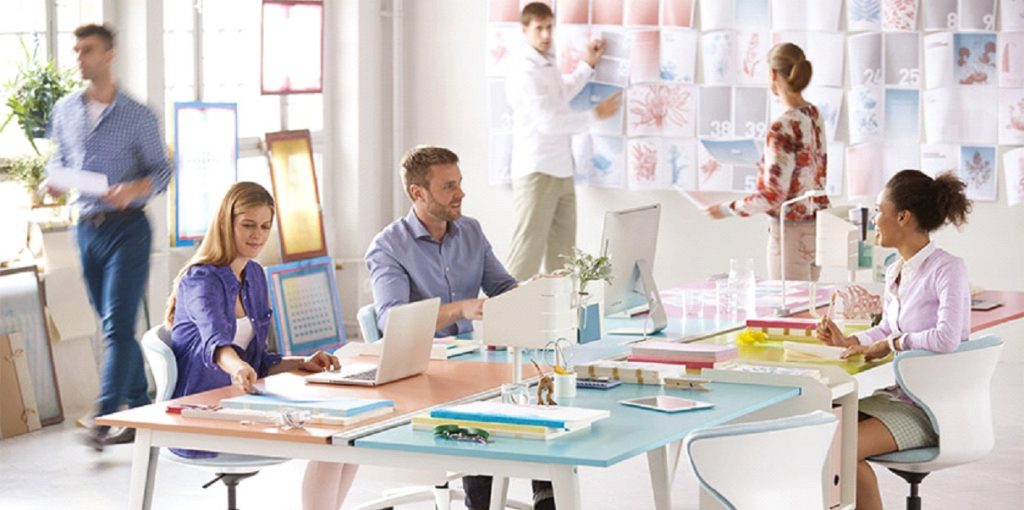
Workshop areas for teamwork and creative activity
Many companies have special rooms where employees find it easier to give free rein to their creativity. This facilitates innovation and efficient project work. “Brainstorming” as a method of working encompasses all temporary modes of work and requires the provision of a physical space plus equipment and furniture.
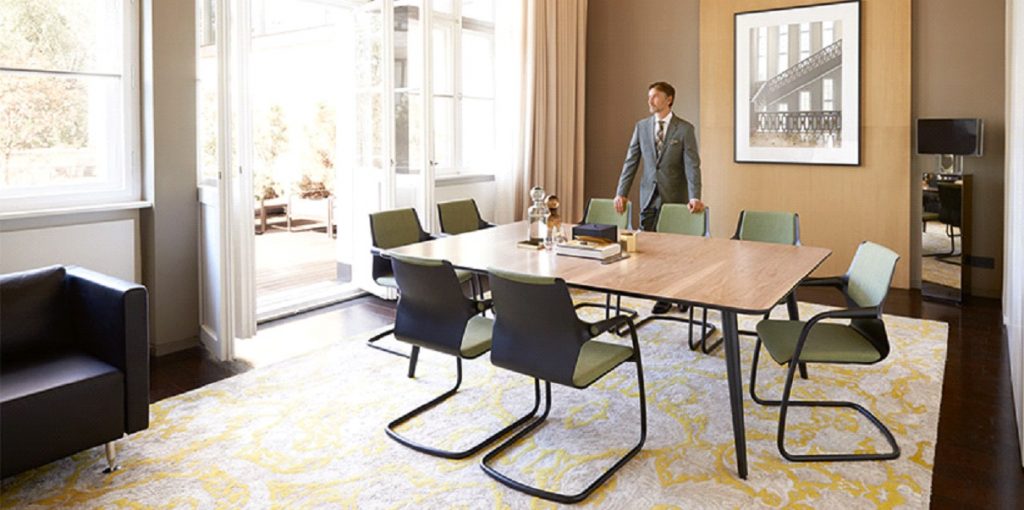
Acoustically screened meeting and conference rooms
For discreet talks between two or three people, small acoustically screened niches or cabins offer just the right environment. For larger or formal meetings, however, classical meeting and conference rooms are what is needed and can also be used for customer visits and official occasions.

